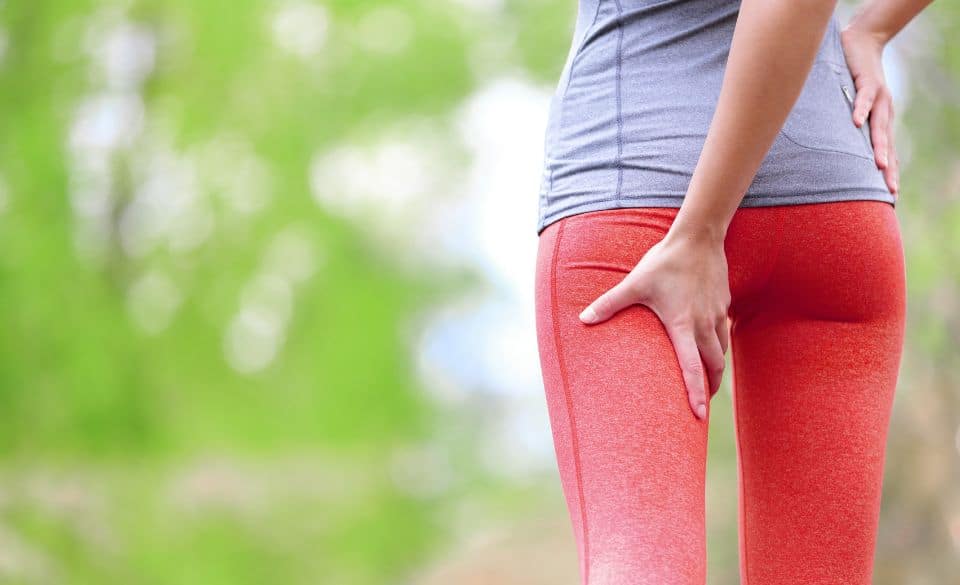
Does Running Give You a Bigger Bum?
Page Contents
When it comes to fitness and exercise, one of the most common goals for many people is to shape and tone their bodies, including their buttocks. With the popularity of running as a form of exercise, it’s natural to wonder whether hitting the pavement or treadmill regularly can give you a bigger bum. In this blog post, we will dive into this topic and explore the effects of running on your gluteal muscles.
The Role of Running in Glute Development
When it comes to developing your glute muscles, running can play a significant role. As a dynamic form of exercise, running engages your glutes throughout the entire running gait cycle. The gluteal muscles, including the gluteus maximus, gluteus medius, and gluteus minimus, are responsible for providing stability, power, and propulsion during running.
During the stance phase of running, when your foot is in contact with the ground, your gluteus maximus, the largest muscle in your glutes, is highly activated. This muscle is responsible for extending your hip joint, propelling your body forward, and giving you that push-off power. Additionally, the gluteus medius and minimus, located on the side of your hips, help stabilize your pelvis and maintain proper alignment during each stride.
Running on different terrains can further enhance gluteal muscle engagement. Uphill running, for example, requires greater activation of the gluteal muscles to overcome the resistance. This increased activation can lead to improved muscle strength and development over time.
So, if you’re wondering whether running can contribute to glute development, the answer is a resounding yes. Regular running, especially on varied terrains, can help strengthen and shape your glute muscles, giving your bum a more defined and toned appearance.
However, it’s important to note that running alone may not be sufficient for significant muscle growth in the glutes. Incorporating targeted strength training exercises that specifically target the gluteal muscles, such as squats, lunges, and hip thrusts, can further enhance glute development and maximize your results. By combining running with these exercises, you can create a well-rounded approach to glute training and achieve your desired goals.
Does Running Give You a Bigger Bum
The question of whether running gives you a bigger bum is a common one, especially among individuals who are looking to shape and enhance their gluteal muscles. The answer to this question is not a straightforward “yes” or “no,” as it depends on several factors.
Firstly, it’s important to understand that running is primarily a cardiovascular exercise that focuses on burning calories and improving your endurance. While running does engage your gluteal muscles, it may not directly result in significant muscle growth or a substantial increase in bum size for everyone.
The impact of running on your gluteal muscles can vary depending on individual factors such as genetics, body composition, and training intensity. Some individuals naturally have a higher propensity for gluteal muscle growth, while others may experience more subtle changes. Additionally, individuals with lower body fat percentages may notice more definition and a more noticeable shape to their glutes.
If your goal is specifically to increase the size of your bum, incorporating targeted strength training exercises into your fitness routine is essential. Exercises like squats, lunges, and hip thrusts can help stimulate muscle growth and enhance the shape and size of your glutes. These exercises target the gluteal muscles more directly and can complement your running routine.
Moreover, nutrition plays a crucial role in muscle growth. To support muscle development, it’s important to consume a balanced diet that includes adequate protein, as protein is essential for muscle repair and growth. By fueling your body properly, you can provide the necessary nutrients for your gluteal muscles to recover and grow after your running and strength training sessions.
It’s also worth mentioning that everyone’s body is unique, and results may vary. Comparing your progress to others is not productive or fair. Instead, focus on your own journey and set realistic goals that align with your body type and genetic predisposition.
What Fitness Activity Gives You A Bigger Bum
If you’re looking to specifically target and enhance your gluteal muscles for a bigger bum, there are several fitness activities that can help you achieve your goal. While individual results may vary, incorporating the following exercises into your routine can promote gluteal muscle growth and help shape your bum:
Weightlifting and Strength Training: One of the most effective ways to build and shape your glutes is through targeted strength training exercises. Exercises like squats, lunges, deadlifts, hip thrusts, and glute bridges specifically target the gluteal muscles and can lead to significant muscle growth and improved shape.
Resistance Band Workouts: Adding resistance bands to your workout routine can provide additional resistance and activation for your glutes. Exercises like lateral band walks, clamshells, fire hydrants, and kickbacks can help isolate and engage the gluteal muscles, promoting growth and strength.
Plyometric Exercises: Plyometric exercises, also known as explosive movements, can be beneficial for activating and strengthening the gluteal muscles. Exercises like jumping lunges, box jumps, and jump squats require powerful hip extension, which can help develop the glutes.
Stair Climbing: Climbing stairs or using a stair climber machine is an excellent way to engage your gluteal muscles. The uphill movement activates the glutes, providing resistance and promoting muscle growth.
Hiking and Walking Uphill: Similar to stair climbing, hiking or walking uphill engages the gluteal muscles to a greater extent. The incline forces your glutes to work harder, leading to muscle activation and potential growth.
Remember, consistency and progressive overload are key factors in any fitness activity. Gradually increasing the intensity, resistance, or duration of your workouts will challenge your glutes and promote muscle growth over time. Additionally, proper nutrition, including sufficient protein intake, is crucial for muscle repair and growth.
It’s important to note that everyone’s body is unique, and genetics play a role in determining how your glutes respond to exercise. Patience and dedication are key, as significant changes take time. Stay consistent, listen to your body, and enjoy the process of sculpting and strengthening your gluteal muscles for a bigger and more defined bum.



